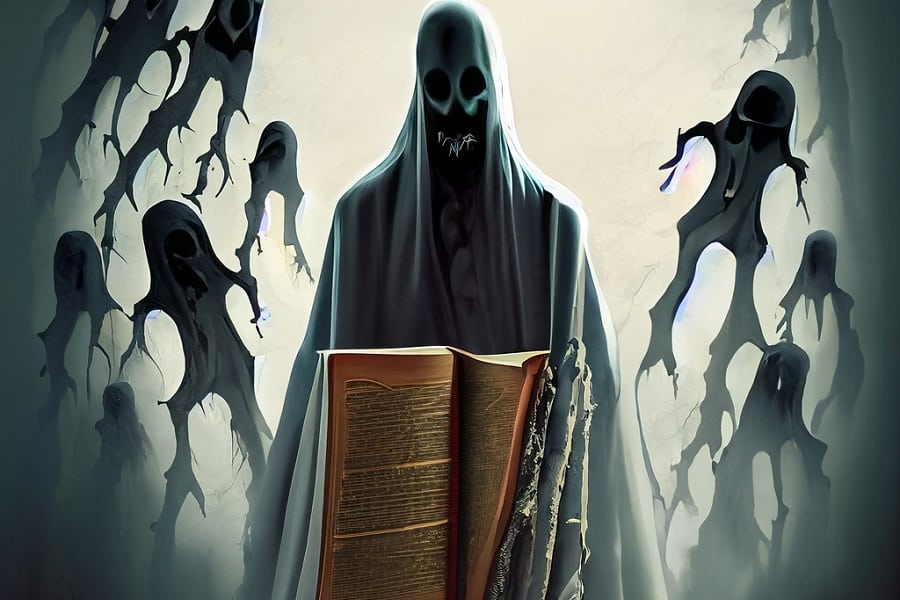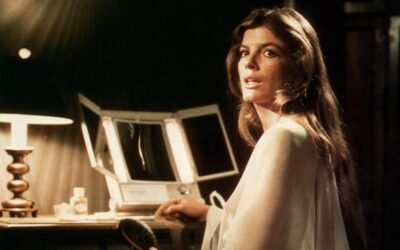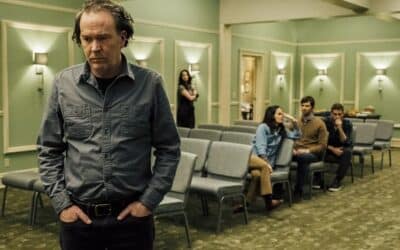
Deaths in Horror
Horror fiction has the unique ability to grip readers with spine-chilling narratives that delve into the darkest corners of human imagination. Authors in this genre often go to great lengths to create unforgettable, gruesome deaths that leave readers trembling with fear.
Here, we’ll explore some of the most shocking and disturbing deaths in horror fiction, ranking them according to their ability to evoke terror and leave lasting impressions on readers’ minds.
- Georgie Denbrough – ‘IT’ by Stephen King (1986)
No list of horrifying deaths would be complete without mentioning Stephen King’s classic novel, ‘IT’. The opening scene featuring the gruesome demise of young Georgie Denbrough sets the stage for the nightmarish events that follow. As he chases a paper boat down a stormy street, Georgie encounters Pennywise the Dancing Clown, who rips off his arm and leaves him to bleed to death. The sheer brutality of this scene, along with the innocence of the young victim, makes it one of the most shocking moments in horror fiction.
- Paul Sheldon – ‘Misery’ by Stephen King (1987)
Stephen King strikes again with another unforgettable death, this time in his psychological horror novel, ‘Misery’. When successful author Paul Sheldon is held captive by his obsessive fan, Annie Wilkes, the tension and suspense build up to a horrifying climax. In a fit of rage, Annie hobbles Paul by breaking his ankles with a sledgehammer. This slow, excruciating torture is a chilling reminder of the extent to which human cruelty can go.
- Glen Lantz – ‘A Nightmare on Elm Street’ by Jeffrey Thomas (2014)
Adapted from Wes Craven’s iconic slasher film, ‘A Nightmare on Elm Street’ tells the story of Freddy Krueger, a malevolent spirit who haunts teenagers’ dreams and murders them in their sleep. One of the most notorious kills is that of Glen Lantz, who is swallowed by his own bed and subsequently eviscerated, resulting in a geyser of blood. This grotesque death highlights the vulnerability we experience while asleep, amplifying the terror factor.
- Frank Cotton – ‘The Hellbound Heart’ by Clive Barker (1986)
Clive Barker’s novella, ‘The Hellbound Heart’, introduces readers to the Cenobites – otherworldly beings that revel in pain and suffering. Frank Cotton, a hedonist seeking the ultimate pleasure, inadvertently summons them and pays a steep price. The Cenobites tear him apart with hooked chains, leaving only fragments of his body behind. The gruesome imagery and extreme violence in this scene make it an unforgettable moment in horror literature.
- Jack Torrance – ‘The Shining’ by Stephen King (1977)
In another spine-tingling tale by Stephen King, ‘The Shining’ chronicles the gradual descent into madness of Jack Torrance, who becomes possessed by the malevolent spirits haunting the Overlook Hotel. In the climactic scene, Jack succumbs to the hotel’s evil influence and freezes to death in the hedge maze. His frozen, twisted corpse serves as a chilling reminder of the destructive power of supernatural forces.
- David – ‘The Ruins’ by Scott Smith (2006)
In ‘The Ruins,’ a group of friends on vacation in Mexico stumbles upon an ancient Mayan ruin covered in mysterious, deadly vines. One of the most shocking and gruesome deaths occurs when David, one of the protagonists, attempts to escape the vines’ clutches. The carnivorous vines slowly burrow into his body, causing immense pain and eventually killing him. This gruesome scene highlights the horror of being consumed alive by an unstoppable force of nature.
- Lester Ballard – ‘Child of God’ by Cormac McCarthy (1973)
Cormac McCarthy’s ‘Child of God’ is a deeply disturbing tale of a social outcast named Lester Ballard, who becomes a violent necrophile. In the end, Lester’s own depravity catches up with him as he is captured and left to die in a cave filled with the corpses of his victims. The haunting image of Lester’s death, surrounded by the decaying remains of the people he violated, serves as a fitting and unsettling conclusion to a chilling story.
- Dr. Louis Creed – ‘Pet Sematary’ by Stephen King (1983)
In Stephen King’s ‘Pet Sematary,’ Dr. Louis Creed discovers a burial ground with the power to resurrect the dead. However, the resurrected come back as malevolent and violent versions of their former selves. When Louis’s young son Gage is killed in an accident, Louis decides to resurrect him despite the warnings. The climactic scene sees a now-evil Gage murdering his own mother, and ultimately, Louis himself. The chilling portrayal of a father’s love leading to his own doom adds another layer of terror to this unforgettable novel.
- Eliot – ‘The Troop’ by Nick Cutter (2014)
In ‘The Troop,’ a group of Boy Scouts on a remote island finds themselves battling a horrifying, parasitic worm. Eliot, one of the scouts, becomes infected and is slowly consumed from the inside by the worms. The graphic description of Eliot’s demise, as he is eaten alive by the parasites, is an intensely disturbing and gut-wrenching moment in horror fiction.
- Francis Wayland Thurston – ‘The Call of Cthulhu’ by H.P. Lovecraft (1928)
H.P. Lovecraft’s ‘The Call of Cthulhu’ is a foundational work of cosmic horror, detailing the discovery of a terrifying, ancient deity that threatens humanity’s very existence. The protagonist, Francis Wayland Thurston, is driven mad by his encounter with Cthulhu and ultimately succumbs to insanity. His descent into madness and death serve as a haunting reminder of the insignificance of human existence in the face of cosmic terror.
These ten deaths in horror fiction demonstrate the genre’s ability to tap into our deepest fears, whether they involve gruesome violence, supernatural forces, or the darkest aspects of human nature. By confronting these fears, horror fiction allows readers to explore the limits of their imaginations and confront the darkness within themselves. The emotional impact and unforgettable nature of these scenes ensure that they will continue to haunt readers long after they’ve turned the final page.
More Horror Features
1970s Horror
The 1970s may be gone, but the fear they inspired remains
Horror Through the Ages
A Journey Through Time and Terror
Technology in Horror
When gadgets become nightmares



